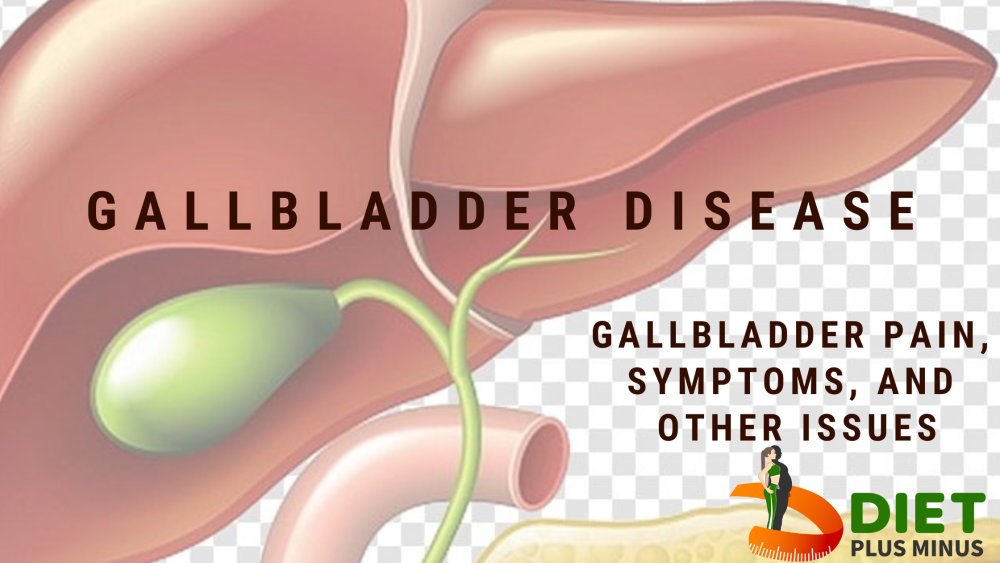
- 12th June 2021
Table of Contents
- Gallbladder Diseases
- There are three main diseases of the biliary tract and gallbladder
- The main risk factors associated with gallstone formation
- Female gender
- High dietary fat intake
- Pregnancy
- Low-grade chronic infections
- Older age
- Rapid weight loss through severe calorie restriction
- Family history
- Some drugs ( lipid-lowering medications, oral contraceptives)
- Obesity
- Inflammatory bowel disease
- Truncal body fat distribution
- Diabetes Mellitus
- Coronary artery disease
- Diets are high in refined carbohydrates and calories but low in fiber
- Ignoring existing food allergies, like celiac disease
- Lactose intolerance
- Gross foods to eat and avoid during gallbladder disease
- Foods safe to eat in the gall bladder
- stone disease
- Foods not safe to eat in the gall bladder
- stone disease
- Bread or chapati from wheat, maize, jawar, bajra, or ragi
- Thick soups and gravies
- Cooked rice
- whole milk or khoya
- Beverages
- Fried foods
- Pulses or beans as thin dal, 1 cup
- Papad, chutney, or pickles
- Deserts as light custard, jelly ice-cream
- Fatty meats
- Fish or chicken
- Condiments and spices
- Egg
- Dried fruits
- Pastry only as biscuits or light cakes
- Sweets or sweetmeats
- Milk or milk products
- Nuts
- Jam or murabba
- Vegetable salads
- Cooked vegetables
- Fluids in liberal amounts
- Potato, sweet potato
- Fat for cooking if no symptoms
- Sugar, jaggery, or honey
- Fresh fruits
- Causes behind gallbladder diseases
Gallbladder Diseases
The gallbladder is a small organ located just below the liver. Its main function is to store bile produced by the liver and release the bile into the small intestine to help digest food. Maintaining a healthy diet full of nutrient-dense foods keeps the gallbladder in perfect health. Certain foods can protect and promote a healthy gallbladder, while others increase the problems associated with it, like inflammation or gallstones.
Eating a healthy, well-balanced diet full of fruits and vegetables is the best way to improve and protect your gallbladder’s health. Fruits and vegetables are full of nutrients and fiber, the latter of which is essential to a healthy gallbladder. Some of the listed foods are either high in vitamin C, calcium, or B vitamins, which are also good for your gallbladder.
It’s thought that eating more plant-based protein could also help prevent gallbladder disease. Foods like beans, nuts, lentils, tofu, and tempeh (as long as you aren’t allergic to soy) are excellent alternatives for red meat.
The main function of the gallbladder is to concentrate and store bile formed in the liver until the body needs to digest food. Bile contains water, cholesterol, fats, bile salts, protein, and bilirubin. If bile contains too much cholesterol, bile salts, or bilirubin, then under certain conditions it can harden to form stones.
There are three main diseases of the biliary tract and gallbladder
1. Cholelithiasis
Formation of gallstones in the gallbladder in the absence of any infection. This may cause no symptoms.
2. Choledocholithiasis
In this condition, stones slip into the bile duct producing, obstruction; pain, and cramps.
3. Cholecystitis
This is characterized by the flow back of bile due to the obstruction in the bile duct. During such episodes, the patient feels upper quadrant abdominal pain accompanied by nausea, vomiting, and flatulence.
The main risk factors associated with gallstone formation
-
Female gender
-
High dietary fat intake
-
Pregnancy
-
Low-grade chronic infections
-
Older age
-
Rapid weight loss through severe calorie restriction
-
Family history
-
Some drugs ( lipid-lowering medications, oral contraceptives)
-
Obesity
-
Inflammatory bowel disease
-
Truncal body fat distribution
-
Diabetes Mellitus
-
Coronary artery disease
-
Diets are high in refined carbohydrates and calories but low in fiber
-
Ignoring existing food allergies, like celiac disease
-
Lactose intolerance
Foods to eat during gallbladder stone disease
Foods safe to eat in the gall bladderstone disease |
Foods not safe to eat in the gall bladderstone disease |
Bread or chapati from wheat, maize, jawar, bajra, or ragi |
Thick soups and gravies |
Cooked rice |
whole milk or khoya |
Beverages |
Fried foods |
Pulses or beans as thin dal, 1 cup |
Papad, chutney, or pickles |
Deserts as light custard, jelly ice-cream |
Fatty meats |
Fish or chicken |
Condiments and spices |
Egg |
Dried fruits |
Pastry only as biscuits or light cakes |
Sweets or sweetmeats |
Milk or milk products |
Nuts |
Jam or murabba |
|
Vegetable salads |
|
Cooked vegetables |
|
Fluids in liberal amountsPotato, sweet potato |
|
Fat for cooking if no symptoms |
|
Sugar, jaggery, or honey |
|
Fresh fruits |
|
Causes behind gallbladder diseases
Some people with gallstones do not show any symptoms while others do. In those that do, symptoms of gallbladder problems can include:
-
pain on the upper right side of the abdomen, especially following meals and eating fatty foods
-
light-colored stools
-
tea-colored urine
-
loss of appetite
-
low-grade fever
-
nausea
-
vomiting
-
jaundice, if the gallbladder ducts are blocked
Gallstones can be painful. They can also block the duct that leads out of the gallbladder, if large. At that time it can be life-threatening. In these types of cases removal of the gallbladder becomes of utmost importance.
Gallbladder problems can be painful and also dangerous in some cases. To protect your gallbladder and maintain it in a healthy condition, eat the right foods and avoid the wrong ones, mainly those high in fats. Ultimately, a diet for a healthy gallbladder will benefit your overall health, keeping your whole body healthier in the long run.
